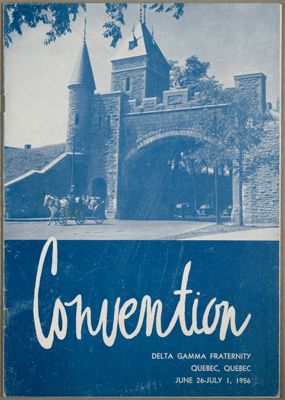
Alpha Beta
Swarthmore College
- Founding Date
- May 17th, 1912
Swarthmore College was created out of a concern of the liberal Hicksite branch of the Society of Friends (Quakers) to establish a place "under the care of Friends, at which an education may be obtained equal to that of the best institutions of learning in our country." Three needs were essential for the new school: coeducation, in keeping with Quaker teaching about equality of the sexes; emphasis on natural sciences, which was seen as a source of much practical knowledge; and a place where Quaker children could receive a "guarded" education. On April 1, 1864, the Senate and House of Representatives of the Commonwealth of Pennsylvania authorized Swarthmore College "to establish and maintain a school and college for the purpose of importing to persons of both sexes knowledge in the various branches of science, literature, and the arts." After the Act of Incorporation took effect in May, the founders purchased land at Westdale in Delaware County, Pennsylvania, so that students would have the advantages of "healthful country living." Swarthmore opened on November 10, 1869, with a class of 199 students. Women at Swarthmore first petitioned Delta Gamma in 1904. At the time, the Fraternity was unable to consider establishing at Swarthmore because the interests of the Fraternity were to establish at the large colleges, and not too rapidly. In October of 1907, members of the Pi Sigma society at Swarthmore petitioned the Fraternity for a Delta Gamma charter. The petition was signed by 11 women. The Fraternity appointed a committee to visit Swarthmore and meet with these women. In their report submitted to the Fraternity, the committee, “[felt] no hesitation in recommending heartily this group of girls and [was] sure that, if their petition is favorably acted upon that they will form a strong and loyal chapter of Delta Gamma and will worthily represent the Fraternity.” However, this recommendation was not enough, and the charter was not granted. Another petition was submitted on June 13, 1911. This petition was signed by 13 Swarthmore women. Council was still reluctant to vote yes on granting a charter, but ultimately, they approved the petition. Alpha Beta chapter of Delta Gamma was installed on May 18, 1912. By the 1930s, frustrations were high on Swarthmore’s campus. At the time, the president of the college felt that all men and women should be a member of a fraternity. By 1931, 76% of all Swarthmore students were affiliated members of an organization. With this explosion of membership arose issues from members not affiliated. A small group of students not affiliated with an organization, perhaps feeling resentment because of that situation, began to campaign for the abolishment of women’s fraternities. At a meeting of collegiate and alumnae representatives of each organization, as well as officials of the college, three plans were adapted to try and resolve the situation. The plan that was voted upon called for the abolishment of fraternities. The vote failed, but the feelings remained. The president and dean of the college decided that the solution to this problem was to ensure that all women become affiliated with an organization. In order to attain this goal, Swarthmore invited other fraternities on to its campus. The issues remained, and tensions grew. A moratorium on pledging was issued by the college on March 22, 1932 and was to last for a year. During this period, the alumnae of the organizations were to come up with a plan to resolve the issues. The moratorium was extended another semester, but finally in February of 1932 the organizations could begin recruiting. In November of 1932, the college Panhellenic was “forced to publish […] its plan for limiting Fraternity invitations on the first pledge day, to 7 girls per group, or a total of 49.” This was new fuel for the abolitionists, who used this decision to berate freshman and sophomores, stating that they weren’t fraternity material and that the only way to survive at Swarthmore was to abolish fraternities. The feelings of resentment toward women’s fraternities festered for many years. The organizations were never able to truly address the problem, and ultimately, the environment for fraternity on Swarthmore’s campus was too toxic. The president of the college called for another vote by the students, and because of the renewed anti-fraternity propaganda and influence over the freshman and sophomore classes, the student body voted to abolish women’s fraternities in December of 1933. The final resolution was passed on January 9, 1934.












